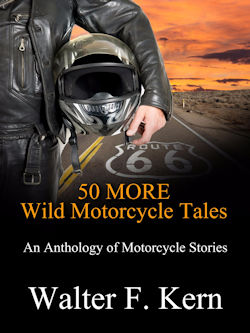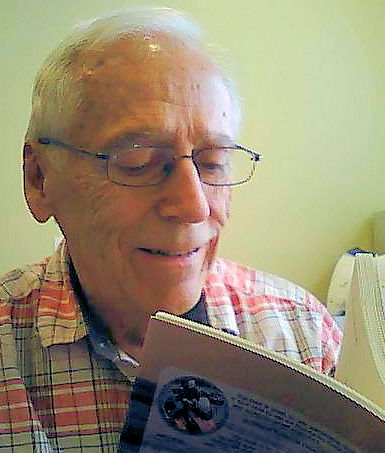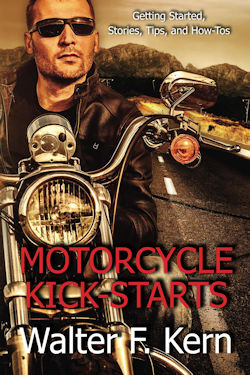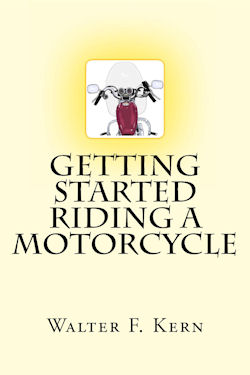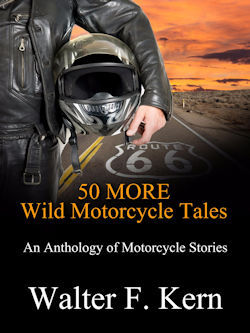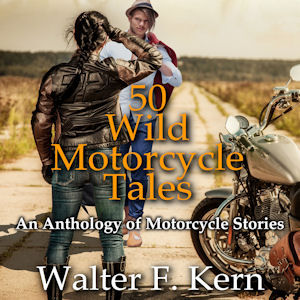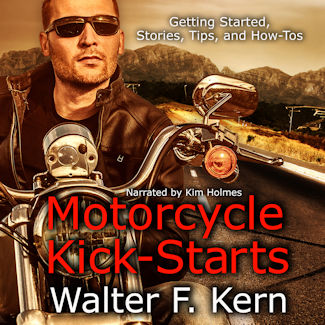Motorcycle Specifications - Definitions of Terms - Page 1
By Walter F. Kern
Making sense out of motorcycle specifications - Page 1
The following provides definitions of terms to demystify motorcycle specifications as usually
listed in the motorcycle magazines and on Internet Web sites. These definitions of terms should be easier
to understand by riders who would rather ride than learn the technical complexities of their machines.
Bear in mind that whole books could be written about each term. We are only touching the basics.
The following message, posted on a motorcycle forum that I used to run, was the motivation for me
to provide these definitions of terms used in motorcycle specifications.
"OK, I admit I am probably the polar opposite of a gearhead, whatever that is. But yesterday, I had
an eleven-year-old grilling me about my bike, and I suddenly realized that I could probably compute this stuff
if someone would translate it into non-gearhead language for me. I have the stats for my bike in front of me.
What do they mean? I would really appreciate a translation that lies somewhere on the technical jargon continuum
between 'it goes really fast when you turn the throttle' and what appears in these specs."
To help this forum member and probably countless others seeking to learn more about their bikes, I'm supplying
these definitions of terms used in typical motorcycle specifications.
Engine:
- Type:
- No. of Strokes: Engines in motorcycles discussed on this site are all four-stroke.
There are two-stroke engines as well. Also, don't confuse four-stroke with four-cylinder or two-stroke
with two-cylinder. They are totally different. The four strokes in a four-stroke engine are defined as follows:
- Stroke 1 - Intake valve(s) open, piston moves down, sucking in the air/fuel mixture.
- Stroke 2 - All valves closed, piston moves up, squeezing the mixture.
- Stroke 3 - All valves still closed, spark plug ignites the fuel/air mixture, pushing the piston down.
- Stroke 4 - Exhaust valve(s) open, piston moves up, blowing the old charge out the exhaust valves.
- A short version is Suck, Squeeze, BANG, and Blow.
- Cooling: An engine can be liquid-cooled by running coolant through the engine and exchanging the
heat via a radiator like a car. It can also be air-cooled by airflow over fins on the engine. Another variation
is oil-cooling where engine oil is circulated in the engine and its heat exchanged by a small radiator.
There are even oil/air/fan cooling systems.
- Valves: Valves are used as mentioned above. There may be one or more valves used for intake
and exhaust. The specs may indicate how many valves are used per cylinder or for the whole engine.
Terms such as SOHC (Single OverHead Cam) and DOHC (Double OverHead Cam), etc. are used to indicate how
the valves are opened and closed. There are other methods to operate the valves as well.
- Number of Cylinders: Engines can have one to six cylinders.
A single-cylinder engine, sometimes called a thumper, is used in small bikes.
Most bikes have engines with two-cylinders arranged in many configurations including: V-twin where
the cylinders are spaced at a particular angle to each other; Parallel twin where the two cylinders are right
next to each other in a vertical position; and Flat-twins where the two cylinders are opposed such as in BMW
Boxers.
Engines may have more than two cylinders such as: Triples where three cylinders are lined up next to each
other in a vertical position; In-line fours similar to a triple except with another cylinder added; V-4
engines such as used in Honda ST1300; V-6 engines such as used in Boss Hoss; Flat-six engines such as used
in Honda Gold Wing 1500/1800s.
There are other engines not described.
- Displacement: Displacement is the volume displaced in the cylinders of an engine as the pistons move
from their bottom position to their highest position in the cylinders. Displacement is measured in either cubic
centimeters (CC) or cubic inches (CI).
- Bore and Stroke: Bore is the diameter of the cylinder in the engine in which a piston moves up and down.
Stroke is the distance that the piston moves up and down inside the cylinder.
- Fuel System: Either carburetor(s) or fuel injection is used to control the mixture of air and gasoline
and prepare it to be sucked through the intake valves and into the cylinders during Stroke 1, described above.
Specs usually identify the carburetor name and how many carburetors are used. Fuel injection comes with different
names such as Fuel Injection (FI), Digital Fuel Injection (DFI), Electronic Sequential Port Fuel Injection (ESPFI),
Programmed Fuel Injection (PGM-FI), etc.
- Compression Ratio: Here's a definition from Motorcycles Forum moderator, Bill Wood:
"Think of Compression Ratio this way: When the piston is at the bottom of the cylinder, say you
could pour 100cc of water into the sparkplug hole (both valves closed) and it would be full.
When the piston is at the top of its stroke, you can only pour 10cc of water into the hole to fill it.
The compression ratio would be 100 to 10 or 10 to 1. That's about as easy to understand as I can make it.
Oops, forgot to say -- Higher compression ratios (in general) will let the engine make more power, require
higher octane gas and be harder for the starter to turn over."
- Maximum Torque: Torque is described as twisting force. This is the maximum amount of twisting force
the engine can put out and at what value of engine Revolutions Per Minute (RPM). Put simply, torque is the
"grunt, stretch your arms, push your eyeballs into their sockets" quality when you aggressively
use the throttle and accelerate hard. The higher the number, the more forceful that feeling is.
- Maximum Horsepower: This is the maximum amount of horsepower delivered by the engine.
It occurs at a particular engine speed. Horsepower (HP) and torque are interrelated with RPM
by the formula HP = TORQUE X RPM / 5252.
Now learn the terms that apply to Drivetrain, Brakes, Suspension, Tires, and Dimensions by going to Page 2.
|
|
| |
| |
|
|
|
Click Picture for Walter F. Kern's
Kindle, Paperback, and Audible
Books
|
More about motorcycles
|
|

